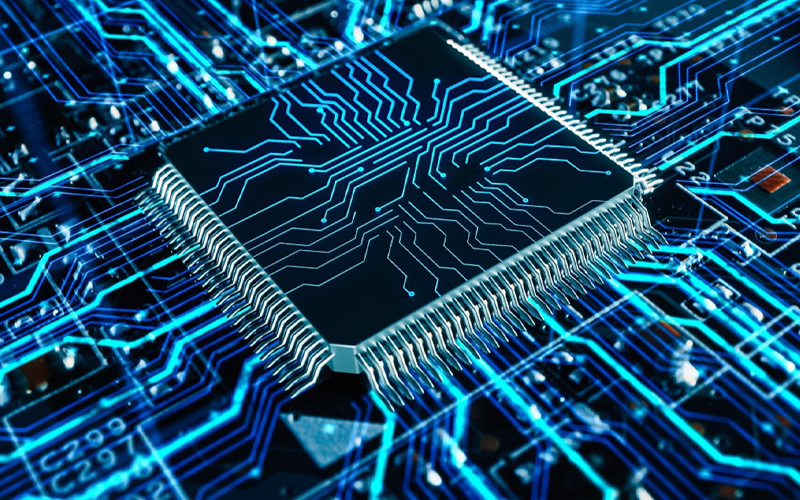5G, the fifth generation of cellular networks, is supposed to be a hundred times faster than 4G. This high speed is creating unforeseen opportunities for businesses. 5G is a powerful technology that is driving a new generation of tools and applications. It offers greater bandwidth, faster connectivity and very low latency, all of which are enhancing day-to-day experiences and changing industries. Many services that were considered to be futuristic are now becoming a reality.
The Internet of Things (IoT) is experiencing change too. The technology promises to leverage edge computing and make IoT more efficient and effective. As telecommunication companies redesign their networks for 5G, the computational environment is becoming more dynamic and powerful and that promises to accelerate the development and adoption of 5G IoT applications across various industries. Experts believe 5G will enable new 5G IoT applications in remote environments such as monitoring and visual inspection, and autonomous operations in connected vehicles and mines, among others. IoT devices will also be able to complete delicate tasks such as surgery.
5G offers higher bandwidth, speed and reliability
Given the higher bandwidth, more devices will be able to connect to the network without experiencing any loss in quality. The higher speeds offered by 5G networks will boost data transfer speeds and thereby enhance the communication speeds of IoT devices with other IoT devices, apps, websites, smartphones, tablets and more.
The higher reliability of 5G networks will offer IoT devices more stability, a critical factor for connected devices such as security cameras, locks and other monitoring systems.
5G and IoT business use cases:
- Remote inspection in power and other industries: Many industries have equipment in remote areas that require periodic inspection and maintenance. Transformers, utility poles and other equipment in the energy grid are often located in difficult-to-access locations. 5G now makes it possible for remote cameras and drones to inspect and send images, videos and other IoT sensor data to artificial intelligence (AI) tools for early detection of problems. Utility wires, gas pipelines and utility wires can all be remotely inspected by drones.
- Production industry: IoT sensors on the 5G network will be able to connect with tools and machines in factories and monitor their health status continuously without stopping production at any time. Data about temperature, speed, oil levels and electric output will be easily available. Productivity will consequently increase. Further, AI-powered visual inspection can be used to spot equipment and product defects or quality issues too.
Production and delivery cost and time can both be reduced by using mobile robots and automated guided vehicles. Consumers would be the final beneficiaries of all reduced costs.
- Healthcare industry: Health-related IoT devices will find new markets as healthcare providers can make use of 5G IoT technology to monitor patient health. Surgeries can also be performed remotely by using low-latency equipment.
- Urban area management: Cities can become smarter with many 5G IoT monitoring devices becoming more easily available. Water levels, cleanliness, HVAC (Heating, Ventilation, and Air Conditioning) systems can all be easily monitored without the need for human intervention.
A leading software developer will soon make it possible to gather real-time IoT data and monitor aging tunnels, highways, railways and bridges.
- Connected vehicles: AI and 5G IoT applications on devices will now be integrated more seamlessly and benefit all industries that are AI focussed. For example, accidents and traffic jams can be reduced by AI in cars communicating with each other. Further, cars would inform drivers when there was someone crossing the street, about the presence of potholes and about any accidents around a road corner. The low latency of 5G coupled with better connectivity will enable greater sharing of data among nearby vehicles making it possible for connected vehicles to see farther and increase safety and awareness on the road.
- Agricultural monitoring: The 5G IoT network can be used by farmers to remotely monitor livestock, crops and farm equipment too. Information such as pest losses and growth rates can be assessed so that farmers can plan harvest time more efficiently and take necessary measures to improve production.
- Shipping and logistics: Shipping containers and shipments can be tracked and monitored without a break, thus enabling better control over supply chain logistics.
Miscellaneous 5G IoT use cases:
- Home and building maintenance: People can monitor their homes even when they are away. For example, any tool that is AI-powered, such as a robot vacuum cleaner can be tracked, monitored and used remotely. This allows people to focus on things more important to them while getting household chores done too.
Sensors in buildings will be more easily connected on a 5G network to monitor and drive solutions for higher energy efficiency, manage visitors and other occupancy related factors. This is especially useful in large facilities such as schools, malls, airports and stadiums.
- Entertainment devices: The low levels of latency afforded by 5G can enhance the performances of entertainment devices. Even AAA games can be played online without downloading them.
- Parking facilities: Cars can be parked by using a 5G IoT network without having to go to a parking spot. Cars can be similarly summoned too.
Challenges in 5G IoT applications
Although 5G will have a huge positive impact on many industries, there are certain challenges that researchers still need to address. A few challenges include:
- The 5G network requires more cellular towers as the technology uses short waves and that would mean the towers need to be near each other. Further, the cost of new network devices will be high too. Costs can be somewhat reduced if vendors share hardware.
- Security risks are higher as 5G components are largely virtual leaving many opportunities open to cybercrime.
- The larger number of users will also require additional security measures.
Globally there are over 14 billion IoT devices in action today. After deploying 5G, the number of IoT devices is expected to reach over 75 billion! Another advantage of the 5G network is that it is designed to work with IoT devices from the very beginning allowing wider adoption of 5G for supporting a large variety of IoT devices.
*For organizations on the digital transformation journey, agility is key in responding to a rapidly changing technology and business landscape. Now more than ever, it is crucial to deliver and exceed on organizational expectations with a robust digital mindset backed by innovation. Enabling businesses to sense, learn, respond, and evolve like a living organism, will be imperative for business excellence going forward. A comprehensive, yet modular suite of services is doing exactly that. Equipping organizations with intuitive decision-making automatically at scale, actionable insights based on real-time solutions, anytime/anywhere experience, and in-depth data visibility across functions leading to hyper-productivity, Live Enterprise is building connected organizations that are innovating collaboratively for the future.







